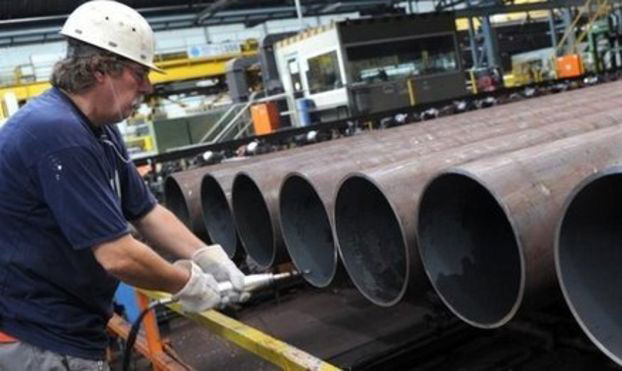German companies seem to be unfazed about the summer lull heading their way. The business climate in Europe’s largest economy improved for a sixth month in July, according to Munich-based Ifo institute.
The index, based on a survey of 7,000 German companies from manufacturing, trade and construction, rose to 116.0 from a revised 115.2 in June. That’s the highest level since 1991 and compares with a median estimate in a Bloomberg survey for a drop to 114.9.
Ebullient sentiment suggests the German economy’s very strong performance at the start of the year is set to spill over into the second half. Steadily declining unemployment has been supporting domestic demand and the Bundesbank predicts that “lively” export demand will turn manufacturing into a leading growth driver.
“Sentiment among German businesses is euphoric,” Ifo President Clemens Fuest said in a statement. “Germany’s economy is powering ahead.”
The German economy grew at the fastest pace in a year in the first quarter and the International Monetary Fund expressed confidence in the country’s growth prospects when it lifted its outlook through 2018 earlier this month. Expansions of 1.8% in 2017 and 1.6% next year will be supported by robust domestic demand and strengthening global trade, the lender said.
Ifo’s measure of current economic conditions improved to 125.4 from a revised 124.2, and a gauge of expectations rose to 107.3 from 106.8. Second-quarter gross domestic-product-data will be published on Aug. 15.
Earlier this month, figures showed production in Germany grew 1.2% in May from April, accelerating from 0.7% and outpacing a forecast of just 0.2% for the month.
Industrial output has now expanded for five consecutive months–marking its best run of growth since before the start of the eurozone’s debt crisis in 2010.
Meanwhile, German import prices increased at the slowest pace in seven months in June, data from Destatis showed Tuesday. Import prices increased 2.5% year-on-year in June, slower than the 4.1% rise in May. This was the weakest increase since November, when prices gained 0.3%. Economists had expected prices to rise 2.9%. Month-on-month, import prices decreased 1.1% in June versus the expected drop of 0.7%.
Excluding crude oil and mineral oil products, import prices advanced 2.6% from the previous year. At the same time, export prices advanced 1.8% on a yearly basis, after climbing 2.2% a month ago.


